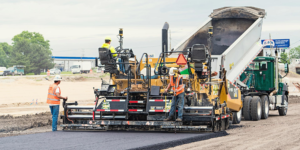When searching for a solar company, look for those that have team members that are NABCEP certified. This is the gold standard of certification for professionals in the solar industry. These experts can expertly navigate roof concerns like tree coverage, high pitches and sun-damaged shingles.

Also, ensure the company has a wide range of equipment, warranties and services. This will help you avoid a costly installation process. Visit Website to learn more.
When choosing a solar company, it’s important to evaluate their cost-effectiveness. This includes comparing upfront costs and energy savings. It also takes into account factors like maintenance and warranty costs. This will help you find a company that provides the best value for your money.
The cost of installing a solar power system depends on the type and size of panels and the amount of electricity they produce. A high-efficiency monocrystalline panel may cost more than a cheaper polycrystalline panel, but it will save you more money over the life of the system. In addition, the cost of installing solar energy systems is often reduced through federal and state tax incentives. For example, the federal Investment Tax Credit (ITC) reduces the overall cost of going solar by 30% for homeowners and businesses.
Whether or not you choose to buy your solar energy system outright, many companies offer financing options. These include third-party and in-house loans. It’s important to consider fees and interest rates when evaluating different financing options. Some solar companies also offer PPAs, where they own and operate the system on your roof but sell you the electricity it generates at a discounted rate.
Another factor to consider is the company’s stability. A well-established solar company is more likely to remain in business for the long term, which means they can honor warranties and provide ongoing support. They are also more likely to invest in their employees and the local community, leading to a higher quality of customer service.
It’s also a good idea to find out how much time it will take for your solar system to pay for itself in energy savings. Some homes reach this point in five years or less, while others may have to wait 10 or 15 years. The amount of time it takes to pay for the system also depends on a variety of factors, including your solar resource potential, state and local rebates and incentives, and your utility rates. To help understand these variations, NREL publishes detailed solar manufacturing cost analysis.
Convenience
There are many solar companies that help homeowners save money on electricity bills by installing renewable energy systems. These companies may also offer loan financing, which can reduce the upfront cost of a solar system. However, it is important to check out the fees and interest rates before making a final decision. Also, it is a good idea to ask for references from previous customers.
Local solar companies are more likely to respond quickly to customer inquiries and provide more personalized service. They are also more knowledgeable about local solar incentives and rebates, which can be a big benefit for homeowners. Additionally, local solar companies can offer better pricing than national competitors.
A reputable solar company will be licensed and insured. It should also have a team that is experienced and qualified in solar installation. This includes engineers, installers, and salespeople. It is also a good idea to find out whether the company is a member of your state’s solar association.
In addition to being licensed and insured, solar companies should be certified by the National Association of Boards of Electricians (NABCEP). This certification is a sign of quality and commitment to excellence. In addition, it is a good idea to look at online reviews of local solar companies. These reviews can be helpful in determining which companies are the best in your area.
A solar company should offer a variety of payment options, including loans and PPAs. A good option is to choose a company that offers a range of products, such as panels, inverters, and batteries. It is also a good idea to get a power-production guarantee. This guarantee will ensure that the solar system produces as much electricity as stated in the contract.
While most home owners think that going solar is a costly venture, there are several ways to cut the costs of installing a solar system. One option is to use a home equity loan or HELOC, which can allow homeowners to receive a lower interest rate and qualify for the federal tax credit. In addition, homeowners can also use their local banks to obtain a loan. Another option is to use an online solar marketplace, such as EnergySage. This website matches home and business owners with local solar companies who compete for their business by providing custom quotes.
Reputation
The solar industry is booming, helping the United States meet its climate goals by replacing fossil fuels with clean electricity. But as the industry grows, more customers report shady business practices that are tarnishing its reputation. One-star ratings on solar review sites have increased more than 1,000% since 2018. And prosecutors are investigating high-pressure sales tactics and misleading financing arrangements. This tarnish is threatening rooftop solar’s impressive momentum.
Before you choose a solar installation company, research customer feedback and read reviews to get an idea of their reputation. You should also ask potential installers for references and visit their showrooms or offices if possible. This will give you a sense of their professionalism and dedication to the business.
When researching solar companies, it is important to find a company that has been in the industry for several years. This will ensure that they have a solid track record and experience with the ins and outs of solar power installation and maintenance. Additionally, an established solar company will be more likely to have the resources to support its customers after the sale.
Another thing to consider when researching solar companies is how they treat their customers. A reputable solar company will have excellent customer service and respond to any issues promptly. They will also offer a variety of payment options and be knowledgeable about all available rebates, incentives, and tax credits.
Finally, a reputable solar company will use only top-quality equipment and back it with an outstanding warranty. They will also have a good selection of solar panels to suit any budget and are transparent about their pricing. If you live in New York, I would recommend choosing a company that uses SunPower solar panels because they are the highest-quality solar panel available today and offer the best warranty for their products.
While some homeowners may not be interested in investing in a solar installation, others are eager to do their part for the planet. The right solar company can help you save money and reduce your carbon footprint with a renewable energy system.
Experience
Choosing a solar company with extensive experience is important to ensure the quality of your solar system. This will make it less likely that you’ll encounter issues with your equipment or experience problems with your financing options. The best solar companies are experienced in the entire scope of the solar energy industry, from manufacturing to design and installation. They are also familiar with local energy policies and the nuances of the industry. They have the knowledge and tools to help you save money on your power bills.
A good solar company will have a long history of customer satisfaction and solid financials. This is especially true for a company that has been around for 25 years or more. Look for customer reviews on sites such as ConsumerAffairs, Better Business Bureau and solar-specific forums to see how other customers feel about the company.
It’s also important to consider whether the solar company you are considering will still be in business if you decide to move or sell your home in the future. If you’re considering a lease or PPA, ask the solar company about a transfer clause that will allow the next homeowner to assume your contract. You should also get a power-production guarantee for any purchase. This will let you know that the solar panels you buy are guaranteed to produce a certain amount of electricity.
If you’re considering a cash purchase, be sure to find out how much the solar company charges for loan financing. This charge can be a significant part of the total cost of your system. It’s a good idea to get quotes from several different solar companies so you can compare the total costs. Be careful about high-pressure sales tactics and be sure to ask for a written contract.
A well-established solar company will be able to offer you financing options that will allow you to go solar at an affordable price. They’ll also be able to guide you through the entire process, including obtaining any required permits. They’ll be familiar with local energy policies and will be able to assess your roof to make sure it’s suitable for solar panels.
